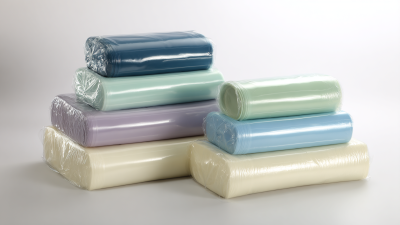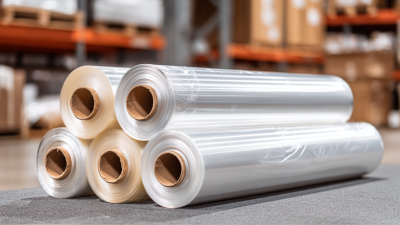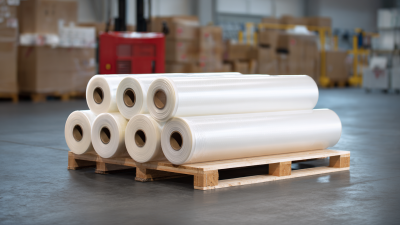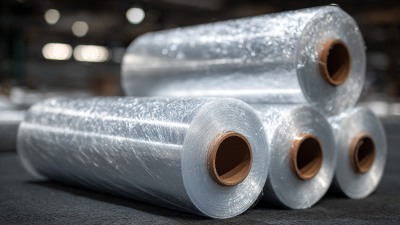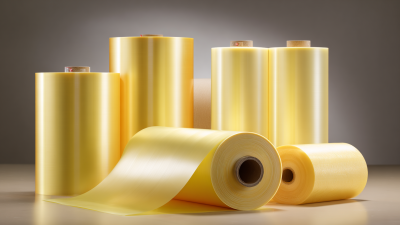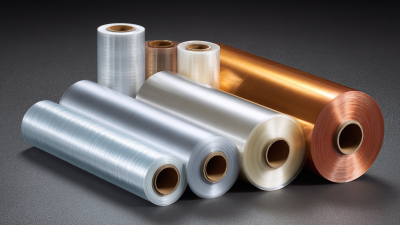In the packaging industry, the choice of film can significantly impact both product integrity and operational efficiency. One emerging contender, Cross-Linked Shrink Film, has garnered attention for its superior performance characteristics compared to traditional films. According to recent industry reports, the global shrink film market is projected to reach $11.4 billion by 2027, with cross-linked varieties driving much of this growth due to their enhanced properties. Not only do these films provide greater clarity and superior strength, but they also exhibit impressive thermal stability, making them ideal for a wide range of applications—from food packaging to industrial uses. As businesses increasingly prioritize sustainability and efficiency, understanding the benefits of Cross-Linked Shrink Film versus traditional films becomes imperative for making informed packaging decisions that align with both market demands and environmental goals.

Cross-linked shrink films have emerged as a superior alternative to traditional films, offering distinct characteristics that significantly enhance performance in various applications. One of the core attributes of cross-linked shrink films is their improved strength and durability, which comes from the cross-linking process that binds polymer chains together. According to a report from MarketsandMarkets, the global market for shrink films is projected to reach USD 10.71 billion by 2025, driven primarily by the increasing demand for packaging materials that provide enhanced protection and durability.
The advantages of cross-linked shrink films extend to their thermal stability and resistance to puncturing, which make them ideal for demanding applications such as food packaging and industrial packaging. Data from a recent Smithers Pira study reveals that cross-linked films can withstand temperatures up to 120°C, outperforming traditional films that often fail at lower temperatures. Additionally, the ability of cross-linked films to maintain their structural integrity under stress reduces product loss during transportation, addressing a vital concern in supply chain management. Consequently, as industries seek sustainable and efficient packaging solutions, cross-linked shrink films are set to play a pivotal role in reshaping the future of packaging.

Traditional shrink films have long been a staple in the packaging industry, known for their versatility and affordability. These films are primarily made from materials like polyolefin and PVC, which provide excellent clarity and strength, making them ideal for a variety of applications, from retail packaging to food preservation. One of the main benefits of traditional shrink films is their ease of use during the packaging process, as they can be quickly applied and shrunk using heat, resulting in a tight fit around products that enhances shelf appeal.

However, traditional films come with limitations. While they are effective for many applications, they often lack the sustainable features increasingly demanded by consumers and regulatory environments. The recent advancements, such as the development of recyclable light-blocking shrink sleeves, highlight the industry's shift towards more sustainable packaging solutions. This reflects a growing trend where manufacturers are looking to balance functionality with environmental responsibility, paving the way for innovations that combine the benefits of traditional films with eco-friendly attributes. As the packaging landscape continues to evolve, businesses must consider both performance and sustainability when selecting shrink film options.
When evaluating packaging materials, the performance of cross-linked shrink film and traditional films plays a critical role in determining the ideal choice for specific applications. Cross-linked shrink films are known for their superior strength and elasticity, allowing them to withstand extreme temperatures and provide enhanced sealing capabilities. This results in a tighter, more secure wrap around products, minimizing the risk of damage during transportation and storage. Additionally, the cross-linking process imparts higher resilience to punctures and tears, making these films an excellent choice for heavy-duty packaging needs.
In contrast, traditional shrink films, while effective for many applications, often lack the robustness seen in cross-linked variants. They may offer adequate protection for lighter items but can struggle with maintaining integrity under intense conditions. Furthermore, traditional films may also exhibit greater shrinkage variability, which can affect the consistency of packaging aesthetics and reliability. Overall, the performance advantages of cross-linked shrink films make them increasingly popular in industries requiring rigorous standards, such as food packaging, pharmaceuticals, and consumer goods, where durability and protection are paramount.
In various industrial applications, the choice between cross-linked shrink film and traditional films can significantly impact performance and efficiency. Cross-linked shrink film is particularly well-suited for environments that demand enhanced durability and resistance to stress. Its unique composition allows it to withstand high temperatures and harsh chemicals, making it an ideal candidate for packaging in the food and beverage industry, where product integrity is paramount. Moreover, its superior shrink characteristics ensure a snug fit around products, providing added security during transportation and storage.
On the other hand, traditional films are often favored in applications where cost-effectiveness is a priority. They perform exceptionally well in general packaging needs, including retail and consumer goods. Their flexibility and ease of use make them a go-to choice for businesses looking to streamline production processes without compromising quality. However, they may fall short in scenarios involving more rigorous conditions, where cross-linked films would truly excel. Understanding the specific requirements of an application is crucial for businesses to make informed decisions regarding the right type of film to use.
When choosing the right packaging solution for your products, it's essential to consider the specific needs of your industry and the advantages of different materials. The global shrink film market is projected to reach a value of $30.7 billion in 2023 and is expected to grow significantly, with a compound annual growth rate (CAGR) of over 4.58% from 2024 to 2032. This growth is driven by an increasing demand for effective and versatile packaging solutions across various sectors, including e-commerce and food and beverage.
Additionally, sustainable packaging options are rapidly gaining traction. The plant-based packaging market is poised for impressive growth, with forecasts indicating a value of $34.2 billion by 2032 and a CAGR of approximately 13.62%. This surge reflects a shift toward environmentally friendly materials, as consumers and companies alike become more conscious of their ecological footprint. As market demands evolve, being informed about the performance and applications of cross-linked shrink films versus traditional films is crucial in making the right packaging choice for your specific needs.
